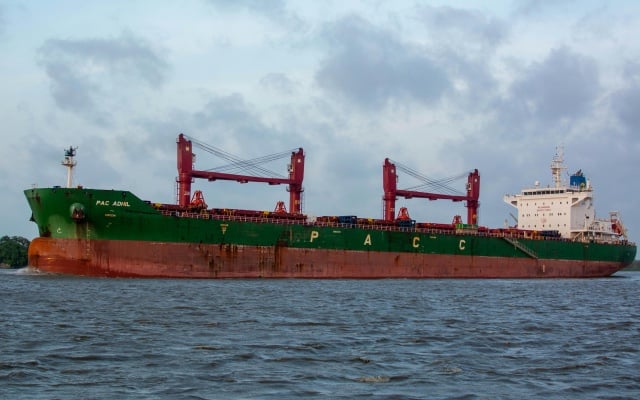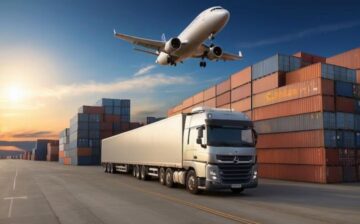Global trade is increasing at an unprecedented rate, all thanks to what we call the humble container. Ocean container shipping now accounts for 80% of all globally traded goods by volume, making it the lifeblood of international commerce as businesses seek to tap into global markets.
Understanding how these ocean containers work and what role they play in a globalized world is critical for efficient, cost-effective shipping operations. The intricacies of the ocean container landscape can be a tough challenge, but it offers an unparalleled advantage of scale and efficiency in modern logistics.
How Ocean Container Shipping Transformed Global Trade
Containerization or the use of containers in international logistics can be traced back to the mid-20th century. Prior to that, international shipping was known to be labour-intensive and subject to wide-ranging threats like damage, theft, and above all, extended delays. The process of loading and unloading goods was mainly manual, and it is no wonder that goods stood stranded for days on the docks awaiting transport.
The advent of standardized containers- typically composed of 20-foot (TEU) or 40-foot (FEU) units revolutionized how international shipping worked once and for all. These containers made it possible to pack and seal goods at their site of origin, which can then be shipped to their respective destinations without having to be opened midjourney.
This not only helped save an immense amount of time but also shielded the cargo against potential damage or loss. Today, ocean containers are widely deemed to be an economical solution for carrying a variety of freight over long distances, like bulk shipments, manufactured goods, raw materials, and e-commerce products.
The Biggest Shipping Challenge: Port Congestion
Ocean container shipping can be highly efficient, but it comes with a distinct set of challenges. No issue is perhaps as urgent or complex as that of congested ports, which has become a regular feature at major ports in the US and internationally. The sight of ships staying stuck at ports for days and even weeks on end has turned into a recurring liability as ports desperately struggle to keep up with ever-rising consumer demand amidst labor shortages.
Outdated port infrastructure also has a part to play, and this collectively wrecks havoc with shipping schedules. The situation becomes even bleaker during peak seasons, forcing containers to wait endlessly to clear customs and go through drayage.
Translation services located close to ports allow goods to shift quickly from ocean containers to domestic trailers, speeding up turnaround times.
Unlock the Strategic Benefits of Ocean Containers
1. Cost Efficiency
Comparatively, the cost of ocean freight is considerably lower per unit of weight than air freight, especially for high-volume cargo. Availing Full container loads is another savvy way to save on costs incurred due to handling and consolidation.
2. Flexible Cargo Types
Cargoes are highly flexible in terms of their potential contents, ranging from perishables in refrigerated units (reefers) to cars, machinery, and consumer electronics. Specialized containers are also available to accommodate oversized, liquid or cargo that falls in hazard categories.
3. Global Reach
Containers rely on a well-established network of ports and shipping lines, which makes them particularly viable when moving goods across borders. Once they land at a port, they can be seamlessly carried in an alternative transportation mode, like truck or rail, for final delivery.
4. Protection Against External Threats
Containers are tightly sealed, which makes them a highly secure means for transporting high-value or sensitive cargo. This significantly reduces the threat of a potential theft or contamination in the container’s contents.
Transloading: A Key Link in the Container Chain
Transloading refers to the process through which cargo is transferred from one mode of transport to another, such as from an international shipping container to a domestic trailer before it is delivered inland. This process helps to streamline and speed up supply chains, especially when the final point of goods is far from the port of entry.
Companies like Accurate Trailers, based in South Florida, lie at the core of this process by providing specialized services like customized trailers, drayage services, and strategic warehousing near major ports. Their close proximity to ports ensures quick access to PortMiami and Port Everglades, making them a valuable partner for companies looking to avoid bottlenecks and reduce turnaround times. Transloading not only helps goods move faster but also allows for:
- Breaking down bulk shipments into multiple destinations
- Reducing transportation costs by optimizing trailer space
- Avoiding costly port storage fees
Summing It Up!
Ocean container shipping has become the driving force for global trade by enabling businesses to achieve scalable and cost-efficient operations. It is crucial for businesses to think beyond the ocean and look at the entire logistics process, including what happens before and after the vessel arrives.
Whether it’s selecting the right container, scheduling, or transloading, every step in the journey of your cargo matters, a proactive strategy and working with experienced partners like Accurate Trailers can prove to be a game-changer for supply chains and equip shippers to ensure their cargo doesn’t just reach the port—it reaches its final destination on time and in perfect condition.
We hope you found this blog post on Unboxing the Rise of Ocean Container Shipping and Its Importance for International Trade, useful. Be sure to check out our post on Transporting Shipping Containers by Various Means for more great tips!
Have Experience in the Moving Industry? Want an Additional Income Stream? Work With All Around Moving!
The Work With Us program at All Around Moving, allows you to run your own Relocation Contractor company from anywhere in the United States. Click here to learn more.






